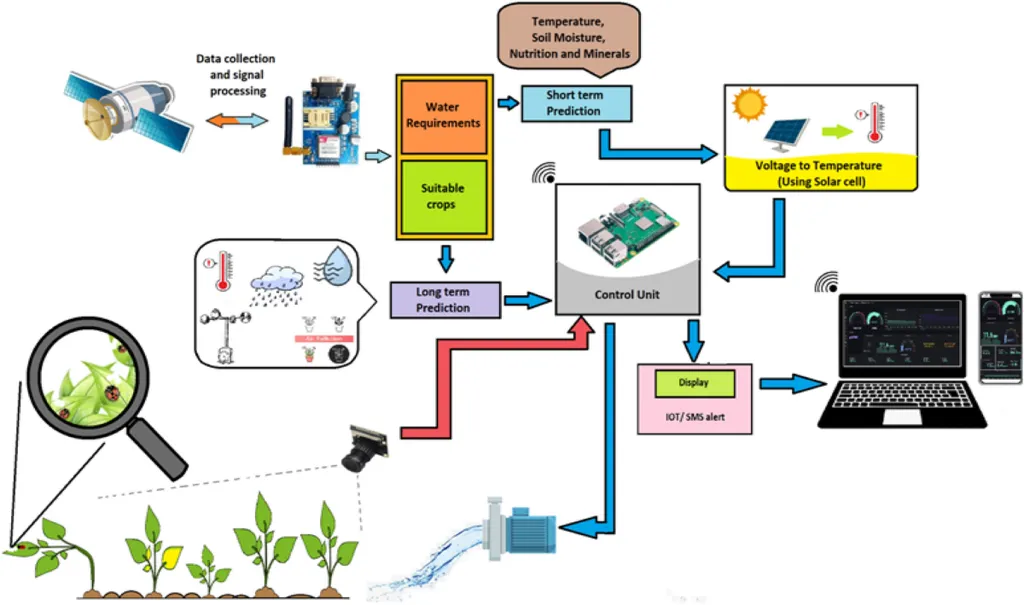In the heart of Iowa, a team of researchers has developed a resilient IoT platform that could revolutionize environmental monitoring in agriculture, particularly in rural and remote areas. The platform, named I-Canopy, is designed to adapt to the harsh realities of limited energy resources and intermittent connectivity, ensuring that data collection remains uninterrupted even under challenging conditions.
I-Canopy is built around the ESP32 microcontroller, a low-cost, energy-efficient chip that is well-suited for the demands of environmental monitoring. The system is designed to monitor key atmospheric and soil parameters, providing valuable data that can help farmers make informed decisions about their crops. But what sets I-Canopy apart is its ability to adapt to changes in available supply voltage, adjusting its sensing frequency and operational modes to maintain functionality across different energy-availability levels.
“One of the key challenges in rural and remote areas is the lack of reliable energy resources and connectivity,” said Lorena Castro García, lead author of the study published in *Smart Agricultural Technology* and a researcher at the University of Iowa. “I-Canopy addresses this challenge by integrating energy-aware operation, local data storage, and cloud synchronization services. This ensures that the system can continue to operate even when power and connectivity are limited.”
The implications for the agriculture sector are significant. With I-Canopy, farmers can monitor their fields in real-time, even in the most remote locations. This can lead to more efficient use of resources, improved crop yields, and ultimately, increased profitability. The system’s ability to store data locally and upload it once connectivity is restored means that monitoring continuity is preserved, providing farmers with a comprehensive picture of their fields’ conditions.
Moreover, I-Canopy’s support for remote firmware updates means that the system can be easily upgraded with new features and improvements, ensuring that it remains at the cutting edge of environmental monitoring technology. This adaptability is crucial in the rapidly evolving field of smart agriculture, where new technologies and techniques are constantly emerging.
The research team’s findings demonstrate that I-Canopy maintains robust field performance under real-world operating conditions. Although a few measurement gaps were observed, these were rare and mainly occurred during episodes of extreme cold or after unexpected reboots. During connectivity disruptions, measurements were stored locally and successfully uploaded once connectivity was restored, indicating that monitoring continuity was preserved.
As the agriculture sector continues to embrace smart technologies, platforms like I-Canopy could play a pivotal role in shaping the future of farming. By providing reliable, real-time data on environmental conditions, I-Canopy can help farmers make more informed decisions, leading to more sustainable and profitable agriculture practices. The system’s resilience and adaptability make it a promising tool for the challenges of modern farming, and its potential applications extend beyond agriculture to other areas where environmental monitoring is crucial.
The raw and processed datasets supporting this study are publicly available on GitHub, inviting further exploration and potential commercialization. With Lorena Castro García leading the charge from the Department of Chemical and Biochemical Engineering at the University of Iowa, the future of adaptive environmental monitoring looks brighter and more resilient than ever.

